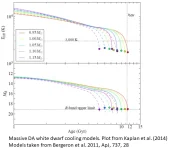That is a pretty good trick considering the Cray II was not released until 1985.
Hell, the Cray I was their first computer, and that was not developed until 1975, with the first system installed at Los Alamos National Laboratory in 1976.
That is seven years after Apollo 11, four years after Apollo 17, and three years after the last time a Saturn rocket was launched for the Skylab project.
I have absolutely no idea why some people feel like they have to lie about things like that. And even about the ideas that he claims the Cray II worked on.
First, it is not the "Pinch Theory", I have never heard to it referred to as such. I only assume he is talking about the Fission Theory. But that was one of many theories and never taken seriously by the middle of the 20th century.
Capture was disproven very early on in the Apollo Program, when it was discovered that the rocks on the moon have the same oxygen isotope ratios. That could only mean the moon was not captured but somehow was made from the same matter as the Earth was. And later studies have shown that the moon is almost the same age as Earth Mark II, or just over 4.5 gy.
And yet another strange name, "Dual Coalescent Theory". I can only assume he is implying the Accretion Theory, where both the Earth and Moon developed in close proximity to each other out of the primordial accretion disk that formed all of the matter in the Solar System.
I have to admit, I am chuckling at his made up names as I had never heard of the various theories for the creation of the moon in those ways. But even by the early part of the 1970s most serious discussion was around some variant of the impact theory.
Now the impact theory was not new, it also had been around since the 19th century. However, with what modeling they had they could not figure out how such an impact could have resulted in the Moon. That is until the 1990s when cluster computers helped establish it was likely from a Mars sized planetoid that likely came in from the outer Solar System and drifted into the Earth's gravity and settled into an unstable orbit in either the L4 or L5 Lagrange point. Where the instability eventually caused a collision (some still argue if it was head on or a glancing blow). Which gave us for a time a ring system before it formed the Moon, and left us with a huge core as our own planet likely absorbed the core of Thea.
Which also explains the LLSVPs below the surface of the planet and resting on top of our core.



